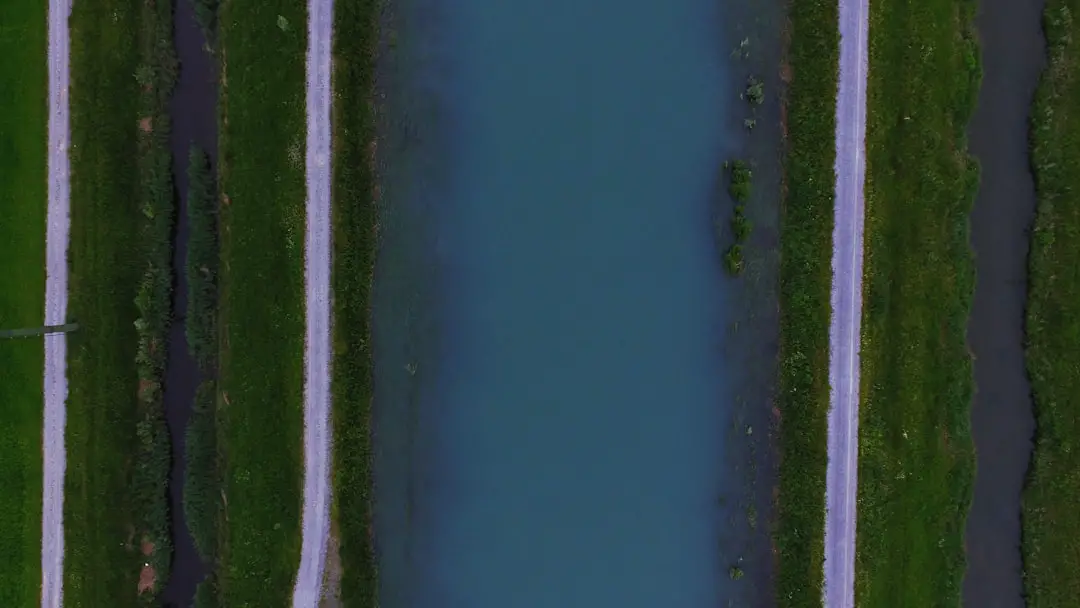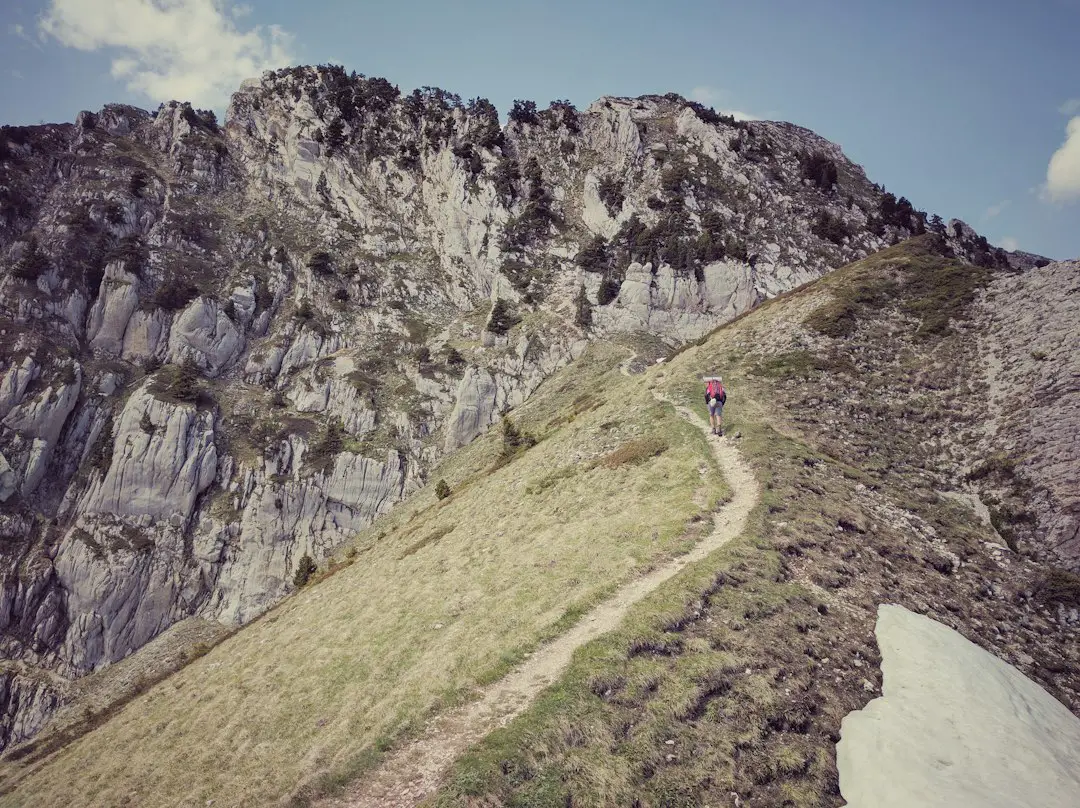Support our educational content for free when you purchase through links on our site. Learn more
7 Long Distance Walking Challenges to Test Your Endurance [2024]
Have you ever wondered what it would be like to push your limits and embark on a long distance walking challenge? The thrill of conquering miles upon miles, the sense of accomplishment as you cross the finish line, and the breathtaking landscapes you encounter along the way. It’s an experience like no other. In this article, we’ll introduce you to 7 long distance walking challenges that will test your endurance and leave you with memories to last a lifetime.
Quick Answer
If you’re looking for a new adventure and want to challenge yourself physically and mentally, here are 7 long distance walking challenges to consider:
- Camino de Santiago (Spain)
- Appalachian Trail (United States)
- West Highland Way (Scotland)
- Te Araroa (New Zealand)
- Inca Trail (Peru)
- The Larapinta Trail (Australia)
- Hadrian’s Wall Path (England)
✅ CHECK PRICE on: Walking Gear | Hiking Boots | Backpacks | Outdoor Clothing
Quick Tips and Facts
- Long distance walking challenges offer a unique opportunity to test your endurance and explore stunning landscapes.
- These challenges vary in difficulty and duration, so choose one that suits your fitness level and time constraints.
- Proper training, gear, and preparation are essential for a successful long distance walking challenge.
- Many of these challenges have designated routes and support services, making them accessible to walkers of all abilities.
- Participating in a long distance walking challenge can be a life-changing experience, pushing you to new limits and fostering a sense of accomplishment.
Background: Exploring the World on Foot

Walking has been a fundamental mode of transportation and exploration throughout human history. From ancient pilgrimage routes to modern-day long distance trails, walking allows us to connect with nature, challenge ourselves, and immerse ourselves in different cultures. Long distance walking challenges have gained popularity in recent years, attracting adventurers from all walks of life. These challenges offer a unique opportunity to push your limits, discover hidden gems, and forge lifelong friendships.
1. Camino de Santiago (Spain)
The Camino de Santiago, also known as the Way of St. James, is a network of pilgrimage routes leading to the Santiago de Compostela Cathedral in northwest Spain. The most famous route, the Camino Francés, stretches over 500 miles and offers stunning landscapes, rich history, and cultural encounters. Walkers from all over the world embark on this spiritual journey, seeking personal growth and reflection. The Camino de Santiago is not just a physical challenge, but also a transformative experience that will leave you with a deep sense of accomplishment.
Camino de Santiago Rating Table
| Aspect | Rating |
|---|---|
| Difficulty | 8 |
| Scenery | 9 |
| Cultural | 10 |
| Accommodation | 7 |
| Support | 8 |
| Overall Rating | 8.4 |
Difficulty
The Camino de Santiago is rated 8 out of 10 in terms of difficulty. The route covers varied terrain, including mountains, forests, and plains. Some sections can be challenging, especially for those who are not accustomed to long distance walking. However, with proper training and preparation, walkers of all fitness levels can complete the Camino de Santiago.
Scenery
With its diverse landscapes, the Camino de Santiago offers breathtaking scenery at every turn. From rolling hills and vineyards to ancient villages and historic landmarks, the route showcases the beauty of northern Spain. Walkers will have the opportunity to immerse themselves in nature and soak in the stunning views along the way.
Cultural
The Camino de Santiago is deeply rooted in history and culture. As you walk along the route, you’ll pass through charming towns and villages, each with its own unique traditions and customs. You’ll have the chance to interact with fellow pilgrims from around the world, sharing stories and forging lifelong friendships. The cultural aspect of the Camino de Santiago is truly enriching and adds a special dimension to the walking experience.
Accommodation
Accommodation options along the Camino de Santiago range from albergues (pilgrim hostels) to hotels and guesthouses. Albergues are a popular choice among walkers, as they provide an opportunity to connect with other pilgrims and share experiences. However, it’s important to note that albergues can be basic and communal, so if you prefer more privacy and comfort, there are alternative options available.
Support
The Camino de Santiago is well-supported, with numerous services catering to walkers’ needs. Along the route, you’ll find cafes, restaurants, and shops where you can rest, refuel, and stock up on supplies. There are also luggage transfer services available, allowing you to lighten your load and enjoy the walk without the burden of carrying a heavy backpack.
Helpful Links
2. Appalachian Trail (United States)
The Appalachian Trail is a legendary long distance hiking trail that stretches over 2,180 miles through the eastern United States. It traverses diverse terrain, including mountains, forests, and meadows, offering a challenging and rewarding experience for walkers. The trail passes through 14 states, from Georgia to Maine, and showcases the natural beauty of the Appalachian Mountains. Walking the entire length of the Appalachian Trail is a feat that only a few hundred people accomplish each year, but shorter sections can be tackled by walkers of all abilities.
Appalachian Trail Rating Table
| Aspect | Rating |
|---|---|
| Difficulty | 9 |
| Scenery | 9 |
| Wildlife | 8 |
| Camping | 9 |
| Support | 7 |
| Overall Rating | 8.4 |
Difficulty
The Appalachian Trail is known for its challenging terrain and rugged wilderness. It is rated 9 out of 10 in terms of difficulty, requiring walkers to be physically fit and mentally prepared. The trail includes steep ascents and descents, rocky sections, and unpredictable weather conditions. It’s important to have proper hiking gear, navigation skills, and wilderness experience before attempting the Appalachian Trail.
Scenery
The Appalachian Trail offers stunning scenery throughout its entire length. Walkers will have the opportunity to hike through dense forests, cross picturesque streams, and enjoy panoramic views from mountain peaks. The trail is especially beautiful during the fall season when the leaves change color, creating a vibrant tapestry of reds, oranges, and yellows.
Wildlife
The Appalachian Trail is home to a diverse range of wildlife, including black bears, white-tailed deer, and various bird species. Walkers may encounter these animals along the trail, adding to the sense of adventure and connection with nature. It’s important to follow proper wildlife safety guidelines and respect the animals’ natural habitat.
Camping
Camping is an integral part of the Appalachian Trail experience. There are designated campsites and shelters along the trail where walkers can rest and spend the night. These campsites offer basic amenities such as water sources, picnic tables, and privies. It’s important to plan your camping spots in advance, as some areas have limited availability.
Support
While the Appalachian Trail is a remote and challenging trail, there is a supportive community of hikers and trail angels who provide assistance along the way. Trail towns, located near the trail, offer resupply options, accommodations, and other services for walkers. Additionally, there are volunteer organizations that maintain the trail and provide information and support to hikers.
Helpful Links
3. West Highland Way (Scotland)
The West Highland Way is a 96-mile trail that traverses the stunning landscapes of Scotland’s Highlands. Starting in Milngavie, near Glasgow, and ending in Fort William, the trail takes walkers through Loch Lomond, Rannoch Moor, and Glen Nevis, showcasing the rugged beauty of the Scottish Highlands. The West Highland Way offers a mix of challenging terrain, breathtaking views, and cultural encounters, making it a popular choice for long distance walkers.
West Highland Way Rating Table
| Aspect | Rating |
|---|---|
| Difficulty | 7 |
| Scenery | 10 |
| Cultural | 8 |
| Accommodation | 8 |
| Support | 7 |
| Overall Rating | 8 |
Difficulty
The West Highland Way is rated 7 out of 10 in terms of difficulty. While it is not as physically demanding as some other long distance walking challenges, it still requires a moderate level of fitness and stamina. The trail includes some steep ascents and descents, as well as sections with uneven terrain. Proper footwear and hiking gear are essential for a comfortable and enjoyable experience.
Scenery
The West Highland Way is renowned for its breathtaking scenery. Walkers will have the opportunity to hike through ancient woodlands, along the shores of Loch Lomond, and across vast moors. The trail offers panoramic views of mountains, lochs, and waterfalls, providing endless photo opportunities. The ever-changing landscape of the Scottish Highlands is sure to leave you in awe.
Cultural
The West Highland Way is not just about the scenery; it also offers a glimpse into Scotland’s rich history and culture. Along the trail, you’ll pass through charming villages, historic sites, and ruins. You’ll have the chance to learn about the local traditions, sample traditional Scottish cuisine, and interact with friendly locals. The cultural aspect of the West Highland Way adds depth and meaning to the walking experience.
Accommodation
Accommodation options along the West Highland Way range from campsites and bunkhouses to hotels and guesthouses. There are also designated wild camping spots for those who prefer a more adventurous experience. It’s important to plan your accommodation in advance, especially during peak season, as availability can be limited.
Support
The West Highland Way is well-supported, with a range of services available to walkers. Along the trail, you’ll find cafes, restaurants, and shops where you can rest and refuel. There are also luggage transfer services and guided tours available, allowing you to tailor your experience to your preferences. The local tourism office can provide information and assistance to walkers.
Helpful Links
4. Te Araroa (New Zealand)
Te Araroa, which means “The Long Pathway” in Maori, is a long distance trail that spans the entire length of New Zealand, covering approximately 3,000 kilometers. The trail showcases the diverse landscapes of New Zealand, from stunning coastlines to majestic mountains. Te Araroa offers a unique opportunity to immerse yourself in nature, explore remote wilderness areas, and experience the rich Maori culture.
Te Araroa Rating Table
| Aspect | Rating |
|---|---|
| Difficulty | 9 |
| Scenery | 10 |
| Cultural | 9 |
| Accommodation | 7 |
| Support | 8 |
| Overall Rating | 8.6 |
Difficulty
Te Araroa is rated 9 out of 10 in terms of difficulty. The trail includes challenging sections, such as river crossings, steep ascents and descents, and exposed alpine terrain. It requires a high level of fitness, navigation skills, and wilderness experience. Proper preparation and equipment are essential for a safe and enjoyable journey on Te Araroa.
Scenery
The scenery along Te Araroa is nothing short of spectacular. Walkers will have the opportunity to hike through pristine forests, along rugged coastlines, and across alpine landscapes. The trail offers breathtaking views of mountains, lakes, and fjords, providing a true sense of awe and wonder. New Zealand’s natural beauty is on full display along Te Araroa.
Cultural
Te Araroa is not just a physical challenge; it is also a cultural journey. The trail passes through areas of significant Maori cultural heritage, providing opportunities to learn about the indigenous culture and history of New Zealand. Walkers will have the chance to visit Maori marae (meeting grounds), learn traditional customs, and experience the warm hospitality of the Maori people.
Accommodation
Accommodation options along Te Araroa range from campsites and huts to hotels and guesthouses. The trail passes through towns and villages where walkers can resupply, rest, and recharge. It’s important to plan your accommodation in advance, especially during peak season, as availability can be limited in some areas.
Support
Te Araroa is supported by a network of volunteers and local communities who provide assistance to walkers. There are trail angels who offer accommodation, transportation, and other services to hikers. The Te Araroa Trust provides information, maps, and resources to help walkers plan their journey. The support and camaraderie along Te Araroa make it a truly special experience.
Helpful Links
5. Inca Trail (Peru)
The Inca Trail is a 26-mile trail that leads to the ancient ruins of Machu Picchu in Peru. This iconic trail takes walkers through breathtaking mountain scenery, lush cloud forests, and ancient Inca ruins. Walking the Inca Trail is not only a physical challenge but also a cultural and historical journey, offering a glimpse into the fascinating world of the Inca civilization.
Inca Trail Rating Table
| Aspect | Rating |
|---|---|
| Difficulty | 8 |
| Scenery | 9 |
| Cultural | 10 |
| Accommodation | 7 |
| Support | 8 |
| Overall Rating | 8.4 |
Difficulty
The Inca Trail is rated 8 out of 10 in terms of difficulty. The trail includes steep ascents and descents, high altitude sections, and uneven terrain. Altitude sickness can be a concern for some walkers, so it’s important to acclimatize properly and listen to your body. With the right preparation and mindset, walkers of all fitness levels can complete the Inca Trail.
Scenery
The scenery along the Inca Trail is nothing short of breathtaking. Walkers will have the opportunity to hike through snow-capped mountains, lush cloud forests, and picturesque valleys. The trail offers panoramic views of the Andes Mountains and the Urubamba River, creating a truly awe-inspiring experience. The beauty of the Inca Trail is unrivaled.
Cultural
The Inca Trail is deeply rooted in the history and culture of the Inca civilization. Along the trail, walkers will encounter ancient Inca ruins, such as Wiñay Wayna and Intipata, which provide a glimpse into the past. The highlight of the trail is, of course, the majestic ruins of Machu Picchu, a UNESCO World Heritage Site and one of the New Seven Wonders of the World. Walking the Inca Trail is a journey through time and a celebration of ancient culture.
Accommodation
Accommodation options along the Inca Trail are limited to campsites. Walkers are required to camp at designated sites along the trail, which are equipped with basic facilities such as toilets and cooking areas. It’s important to book your camping permits well in advance, as they are limited and in high demand.
Support
The Inca Trail is a guided trek, meaning walkers must be accompanied by a licensed tour guide. These guides provide valuable information about the trail, the Inca civilization, and the flora and fauna of the region. They also ensure the safety and well-being of the walkers throughout the journey. The support and expertise of the guides make the Inca Trail accessible to walkers of all abilities.
Helpful Links
6. The Larapinta Trail (Australia)
The Larapinta Trail is a 139-mile trail that winds its way through the Australian Outback, offering walkers a unique and challenging experience. The trail passes through the West MacDonnell Ranges, showcasing stunning landscapes, dramatic sunsets, and ancient cultural sites. Walking the Larapinta Trail is an opportunity to disconnect from the modern world and immerse yourself in the raw beauty of the Australian wilderness.
The Larapinta Trail Rating Table
| Aspect | Rating |
|---|---|
| Difficulty | 9 |
| Scenery | 9 |
| Cultural | 8 |
| Accommodation | 7 |
| Support | 8 |
| Overall Rating | 8.2 |
Difficulty
The Larapinta Trail is rated 9 out of 10 in terms of difficulty. The trail includes challenging sections with steep ascents and descents, rocky terrain, and limited water sources. The remote and rugged nature of the Australian Outback adds an extra layer of challenge. Proper preparation, navigation skills, and self-sufficiency are essential for a successful journey on the Larapinta Trail.
Scenery
The scenery along the Larapinta Trail is nothing short of breathtaking. Walkers will have the opportunity to hike through ancient gorges, along towering cliffs, and across vast plains. The trail offers panoramic views of the West MacDonnell Ranges, especially during sunrise and sunset when the colors of the landscape come alive. The raw beauty of the Australian Outback is on full display along the Larapinta Trail.
Cultural
The Larapinta Trail is not just about the scenery; it also offers a glimpse into the rich Aboriginal culture of Central Australia. Along the trail, walkers will encounter ancient rock art sites, sacred sites, and Dreamtime stories. The local Aboriginal communities have a deep connection to the land and can provide valuable insights into their culture and traditions. Walking the Larapinta Trail is a cultural journey of discovery.
Accommodation
Accommodation options along the Larapinta Trail are limited to campsites and basic huts. Walkers are required to carry their own camping gear and supplies, as there are no formal facilities along the trail. It’s important to be self-sufficient and plan your camping spots in advance, as water sources can be scarce in some areas.
Support
While the Larapinta Trail is a remote and challenging trail, there is a supportive community of walkers and local tour operators who provide assistance and information. The local tourism office can provide maps, trail updates, and advice to walkers. It’s important to be well-prepared and self-sufficient, as the trail is not as well-supported as some other long distance walking challenges.
Helpful Links
7. Hadrian’s Wall Path (England)
Hadrian’s Wall Path is an 84-mile trail that follows the ancient Roman wall built by Emperor Hadrian in northern England. The trail offers walkers the opportunity to explore the beautiful countryside, visit historic sites, and learn about Roman history. Walking Hadrian’s Wall Path is a journey through time, allowing you to step back into the days of the Roman Empire.
Hadrian’s Wall Path Rating Table
| Aspect | Rating |
|---|---|
| Difficulty | 6 |
| Scenery | 8 |
| Historical | 10 |
| Accommodation | 8 |
| Support | 7 |
| Overall Rating | 7.8 |
Difficulty
Hadrian’s Wall Path is rated 6 out of 10 in terms of difficulty. The trail is relatively flat and well-maintained, making it accessible to walkers of all abilities. The main challenge is the distance, as walkers will need to cover an average of 10 miles per day. With proper training and preparation, Hadrian’s Wall Path can be completed by walkers of all fitness levels.
Scenery
The scenery along Hadrian’s Wall Path is diverse and picturesque. Walkers will have the opportunity to hike through rolling countryside, along rivers, and across open moorland. The trail offers panoramic views of the surrounding landscape, including the iconic Hadrian’s Wall itself. The beauty of the English countryside is on full display along Hadrian’s Wall Path.
Historical
Hadrian’s Wall Path is steeped in history and offers walkers the chance to explore ancient Roman sites and ruins. Along the trail, you’ll encounter forts, milecastles, and turrets that once formed part of the Roman frontier. The wall itself is a testament to the engineering prowess of the Roman Empire. Walking Hadrian’s Wall Path is a journey through history and a unique opportunity to connect with the past.
Accommodation
Accommodation options along Hadrian’s Wall Path range from campsites and bunkhouses to hotels and guesthouses. There are also designated wild camping spots for those who prefer a more adventurous experience. It’s important to plan your accommodation in advance, especially during peak season, as availability can be limited in some areas.
Support
Hadrian’s Wall Path is well-supported, with a range of services available to walkers. Along the trail, you’ll find cafes, pubs, and shops where you can rest and refuel. There are also luggage transfer services and guided tours available, allowing you to tailor your experience to your preferences. The local tourism office can provide information and assistance to walkers.
Helpful Links
FAQ

How do I get fit for long distance walking?
Getting fit for long distance walking requires a combination of cardiovascular exercise, strength training, and flexibility work. Start by gradually increasing your walking distance and intensity, incorporating hills and varied terrain into your training. Strength training exercises, such as squats and lunges, can help build the muscles needed for long distance walking. Don’t forget to stretch before and after your walks to improve flexibility and prevent injuries.
Read more about “Virtual Walk Treadmill App: Transform Your Indoor Workout Experience …”
How do I increase my stamina for long distance walking?
To increase your stamina for long distance walking, it’s important to gradually increase your walking distance and duration over time. Incorporate interval training into your walks, alternating between periods of faster walking and slower recovery periods. Cross-training activities, such as cycling or swimming, can also help improve your cardiovascular fitness and stamina. Consistency is key, so aim to walk regularly and gradually increase the intensity and duration of your walks.
How do you get used to walking long distances?
Getting used to walking long distances requires building up your endurance gradually. Start by setting achievable goals and gradually increasing your walking distance each week. Listen to your body and take rest days when needed. Invest in proper walking shoes and gear to ensure comfort and prevent blisters. Practice good walking posture and technique to minimize strain on your joints and muscles. Finally, stay hydrated and fuel your body with nutritious foods to support your long distance walking journey.
How do I train for a 100 mile walk?
Training for a 100 mile walk requires a structured and progressive training plan. Start by building a solid base of walking fitness, gradually increasing your weekly mileage. Incorporate long walks into your training, gradually increasing the distance each week. Practice walking at a consistent pace and experiment with different walking techniques to find what works best for you. It’s also important to simulate race conditions during your training, such as walking on similar terrain and carrying a backpack with the same weight as you would during the event. Finally, don’t forget to taper and rest before the event to allow your body to recover and be ready for the challenge.
Read more about “How to Make a Walking Event …”
Conclusion

Embarking on a long distance walking challenge is a truly transformative experience. Whether you choose to walk the Camino de Santiago, hike the Appalachian Trail, or explore the rugged beauty of the Larapinta Trail, each challenge offers its own unique set of rewards and challenges. From stunning scenery and cultural encounters to personal growth and a sense of accomplishment, these long distance walking challenges will push you to new limits and leave you with memories to last a lifetime. So, lace up your hiking boots, pack your backpack, and get ready to embark on the adventure of a lifetime.
Recommended Links
- Virtual Walkathon Tips
- Fundraising Ideas
- Event Promotion
- Technology for Walkathons
- Global Walkathon Events
- Walk Around the World Challenge 2024
